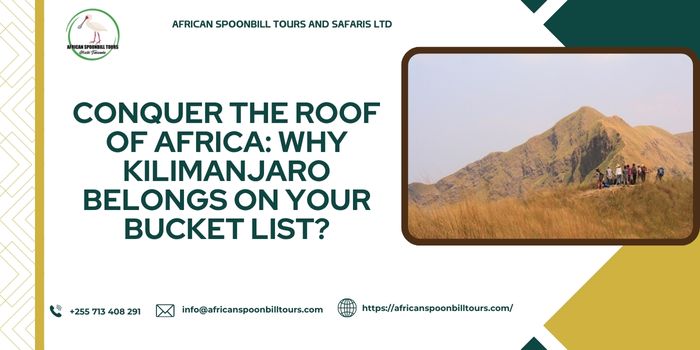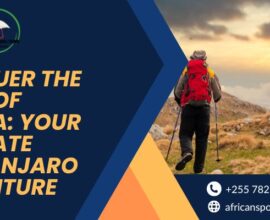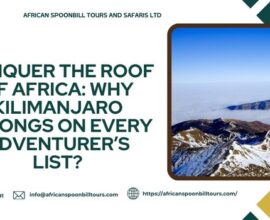There’s something magical about chasing horizons that seem unreachable. If adventure, challenge, and self-discovery fuel your wanderlust, then it’s time to put Africa’s tallest peak—Mount Kilimanjaro—at the top of your list. To climb mount Kilimanjaro isn’t just a trek; it’s an experience that redefines what’s possible for every traveller bold enough to take it on.
The Allure of Africa’s Highest Peak
Rising majestically at 5,895 metres above sea level, Mount Kilimanjaro is more than just Africa’s tallest mountain—it’s a symbol of triumph and resilience. Located in Tanzania, near the Kenyan border, this dormant volcano attracts over 30,000 climbers annually, each seeking to conquer its snow-capped summit (source: UNWTO). Yet, what makes Kilimanjaro so appealing isn’t just its height—it’s the fact that almost anyone with determination can make it to the top.
Unlike other high-altitude climbs that demand technical gear and mountaineering skills, Kilimanjaro offers a variety of routes suitable for both beginners and seasoned trekkers. Whether you’re an experienced hiker or simply crave a once-in-a-lifetime adventure, the mountain welcomes all who dare to dream big.
What Makes the Kilimanjaro Experience So Special?
1. A Journey Through Changing Worlds
Climbing Kilimanjaro is like trekking through all four seasons in one ascent. You begin your journey walking through lush rainforest alive with monkeys and tropical birds. As you climb higher, you’ll pass moorlands, alpine deserts, and eventually the glacier-crowned summit. Few places on Earth offer such an extraordinary transformation of climate and scenery in a single climb.
2. A Personal Test of Grit and Gratitude
This climb is less about speed and more about perseverance. Every step towards the summit becomes a meditation on endurance, willpower, and respect for nature. Many climbers describe the sunrise view from Uhuru Peak as life-changing—when the African plains stretch endlessly beneath a golden sky, it’s impossible not to feel humbled by the world’s vastness.
3. A Deep Connection with Culture and Community
Throughout the trek, local Chagga guides and porters—true heroes of the mountain—accompany climbers, sharing songs, stories, and wisdom passed through generations. Their warmth and encouragement are often what keep spirits high when the air thins and fatigue sets in.
Choosing the Right Route and Experience
There are several routes to the top, each with its own charm. The Marangu route, often called the “Coca-Cola Route,” offers hut accommodations and a moderate climb. The Machame and Lemosho routes, on the other hand, provide breathtaking scenery and a higher success rate. Whichever path you choose, professional guidance through reliable Kilimanjaro trekking packages ensures safety, comfort, and a memorable journey.
Practical Reasons to Make It Happen
- Accessibility: Kilimanjaro doesn’t require ropes or ice axes—just solid fitness and mental strength.
- Eco-diversity: Declared a UNESCO World Heritage Site, its environment hosts rare plants, wildlife, and glaciers that few get to see up close.
- Local Impact: Tourism supports Tanzanian communities, offering sustainable income to local porters, guides, and businesses.
Preparing for the Climb
Preparation is key. Training at least three months prior with hiking, cardio, and endurance workouts increases your chances of reaching the summit. Gear-wise, layering is crucial—temperatures shift from tropical heat to near-freezing conditions. And don’t underestimate acclimatisation: take it slow, listen to your guides, and stay hydrated.
Interestingly, success rates on longer routes (like Lemosho or Rongai) are significantly higher than on shorter ones, thanks to better altitude adaptation (NPS.gov data reworded). So, if your schedule allows, choose quality over speed—after all, Kilimanjaro rewards patience and preparation.
What Awaits at the Summit?
When you finally step onto Uhuru Peak—the “Freedom Peak”—you’re standing on the highest point of Africa. The panoramic sunrise over the endless savannah below is nothing short of breathtaking. Many climbers describe it as a spiritual awakening—a moment where exhaustion, pride, and awe converge into pure emotion.
FAQs About Climbing Mount Kilimanjaro
1. How long does it take to climb Mount Kilimanjaro?
Most treks take between 6 to 9 days, depending on the route and acclimatisation schedule. Longer routes tend to have higher success rates.
2. Is prior climbing experience necessary?
No technical climbing experience is required, but good physical fitness and mental resilience are important.
3. When is the best time to climb Kilimanjaro?
The best times are during the dry seasons—January to March and June to October—when conditions are most stable.
4. How cold does it get at the summit?
Temperatures at Uhuru Peak can drop below -10°C, especially before sunrise, so warm layers and proper gear are essential.
Final Thoughts
To climb Mount Kilimanjaro is to challenge both your body and spirit while immersing yourself in one of Earth’s most stunning landscapes. For travellers from the UK seeking a grand, transformative adventure—Kilimanjaro is more than a destination; it’s a defining chapter of a life well-lived.



